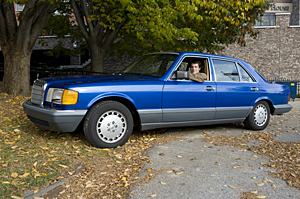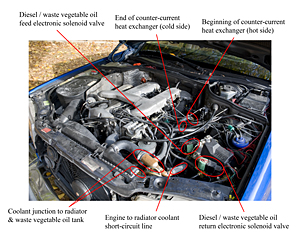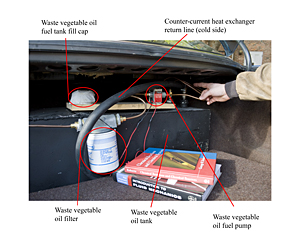ADVERTISEMENT
- Rozovsky wins prestigious NSF Early Career Award
- UD students meet alumni, experience 'closing bell' at NYSE
- Newark Police seek assistance in identifying suspects in robbery
- Rivlin says bipartisan budget action, stronger budget rules key to reversing debt
- Stink bugs shouldn't pose problem until late summer
- Gao to honor Placido Domingo in Washington performance
- Adopt-A-Highway project keeps Lewes road clean
- WVUD's Radiothon fundraiser runs April 1-10
- W.D. Snodgrass Symposium to honor Pulitzer winner
- New guide helps cancer patients manage symptoms
- UD in the News, March 25, 2011
- For the Record, March 25, 2011
- Public opinion expert discusses world views of U.S. in Global Agenda series
- Congressional delegation, dean laud Center for Community Research and Service program
- Center for Political Communication sets symposium on politics, entertainment
- Students work to raise funds, awareness of domestic violence
- Equestrian team wins regional championship in Western riding
- Markell, Harker stress importance of agriculture to Delaware's economy
- Carol A. Ammon MBA Case Competition winners announced
- Prof presents blood-clotting studies at Gordon Research Conference
- Sexual Assault Awareness Month events, programs announced
- Stay connected with Sea Grant, CEOE e-newsletter
- A message to UD regarding the tragedy in Japan
- More News >>
- March 31-May 14: REP stages Neil Simon's 'The Good Doctor'
- April 2: Newark plans annual 'wine and dine'
- April 5: Expert perspective on U.S. health care
- April 5: Comedian Ace Guillen to visit Scrounge
- April 6, May 4: School of Nursing sponsors research lecture series
- April 6-May 4: Confucius Institute presents Chinese Film Series on Wednesdays
- April 6: IPCC's Pachauri to discuss sustainable development in DENIN Dialogue Series
- April 7: 'WVUDstock' radiothon concert announced
- April 8: English Language Institute presents 'Arts in Translation'
- April 9: Green and Healthy Living Expo planned at The Bob
- April 9: Center for Political Communication to host Onion editor
- April 10: Alumni Easter Egg-stravaganza planned
- April 11: CDS session to focus on visual assistive technologies
- April 12: T.J. Stiles to speak at UDLA annual dinner
- April 15, 16: Annual UD push lawnmower tune-up scheduled
- April 15, 16: Master Players series presents iMusic 4, China Magpie
- April 15, 16: Delaware Symphony, UD chorus to perform Mahler work
- April 18: Former NFL Coach Bill Cowher featured in UD Speaks
- April 21-24: Sesame Street Live brings Elmo and friends to The Bob
- April 30: Save the date for Ag Day 2011 at UD
- April 30: Symposium to consider 'Frontiers at the Chemistry-Biology Interface'
- April 30-May 1: Relay for Life set at Delaware Field House
- May 4: Delaware Membrane Protein Symposium announced
- May 5: Northwestern University's Leon Keer to deliver Kerr lecture
- May 7: Women's volleyball team to host second annual Spring Fling
- Through May 3: SPPA announces speakers for 10th annual lecture series
- Through May 4: Global Agenda sees U.S. through others' eyes; World Bank president to speak
- Through May 4: 'Research on Race, Ethnicity, Culture' topic of series
- Through May 9: Black American Studies announces lecture series
- Through May 11: 'Challenges in Jewish Culture' lecture series announced
- Through May 11: Area Studies research featured in speaker series
- Through June 5: 'Andy Warhol: Behind the Camera' on view in Old College Gallery
- Through July 15: 'Bodyscapes' on view at Mechanical Hall Gallery
- More What's Happening >>
- UD calendar >>
- Middle States evaluation team on campus April 5
- Phipps named HR Liaison of the Quarter
- Senior wins iPad for participating in assessment study
- April 19: Procurement Services schedules information sessions
- UD Bookstore announces spring break hours
- HealthyU Wellness Program encourages employees to 'Step into Spring'
- April 8-29: Faculty roundtable series considers student engagement
- GRE is changing; learn more at April 15 info session
- April 30: UD Evening with Blue Rocks set for employees
- Morris Library to be open 24/7 during final exams
- More Campus FYI >>
8:53 a.m., Nov. 13, 2009----“Does it smell like French fries?” Colin Sweeney is used to hearing that question when he tells people about his 1986 Mercedes SDL, which he has converted to run on cooking oil. His answer? “No, it actually smells kind of sweet.”
A junior chemical engineering major, Sweeney commutes to campus from Townsend, Del., every day, a 60-mile round-trip. The price of gas motivated him to initiate the project, but it was his passion for working on engines and his knowledge of fluid mechanics and heat transfer that enabled him to carry it out.
“I found kits that you can buy to convert a car to run on cooking oil,” he says, “but they seemed overly complicated mechanically and at the same time overly simplistic for the user. I decided to design my own so that I would have control over every aspect -- If there was a problem I wanted to be able to look at the gauges and know immediately what was wrong.”
Sweeney got off to a rough start. He purchased the car, which has a 3-liter turbo-charged diesel engine, during his freshman year at what he thought was a bargain-basement price. He soon learned that the engine had a blown head gasket.
Once that was fixed, he turned his attention to the conversion process. The trunk of the car is now outfitted with a 20-gallon tank for the oil, matching the capacity of the existing diesel tank. Using both sources of fuel, the car has a range of about 1,100 miles.
When it is first started, the Mercedes runs on diesel fuel, as the cooking oil has to reach a temperature of about 120 degrees Fahrenheit before it can power the engine. Sweeney's system employs counter-current heat exchangers so that the coolant from the engine can be used to heat the oil. “The biggest challenge is to heat the oil as rapidly as possible,” he says.
The project has not only saved Sweeney money but also contributed to his education.
“Colin got hands-on lessons about fluid flow and heat transfer, before even taking these junior level courses,” says Annette Shine, associate professor in the Department of Chemical Engineering.
“Designing the system was easy,” he says. “Building it was another story.”
But for Sweeney, who has been working on cars and engines, since he was in middle school, the project was well worth the time he put into it. “It's a pretty crude estimate at this point, but I think I can get about 100 miles to the gallon.”
With a new coat of bright blue paint, the Mercedes hides its age well. With 375,000 miles on its odometer, the vehicle is three years older than its owner.
Article by Diane Kukich
Photos by Kathy F. Atkinson





